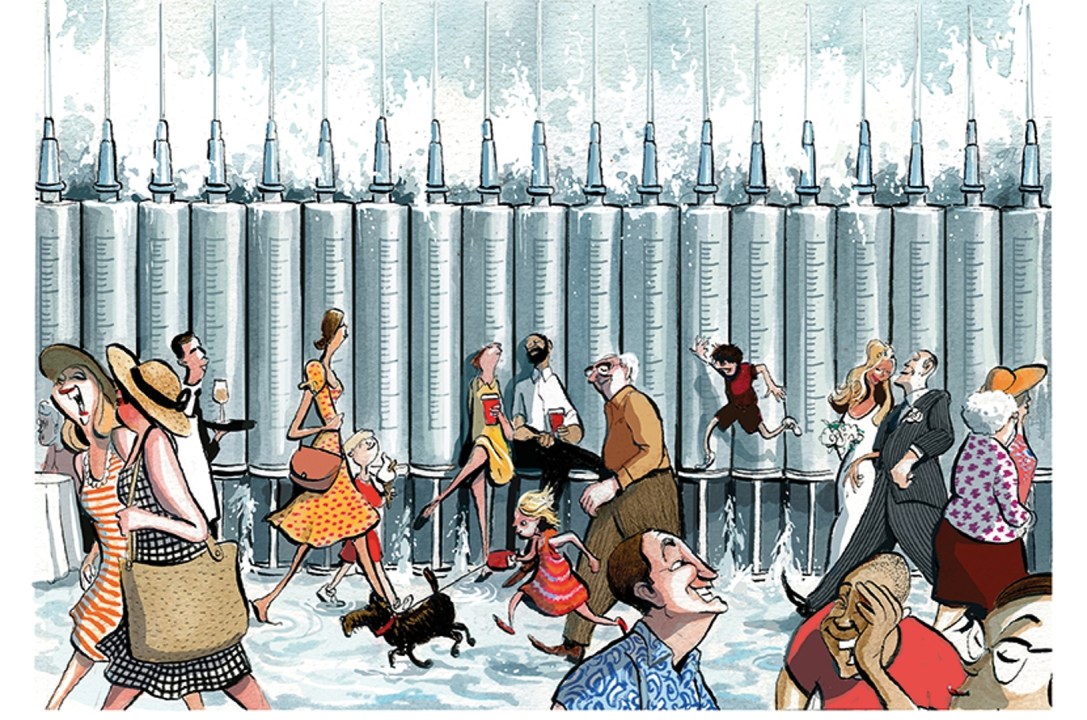The official Covid-19 dashboard has turned green and cases appear to have peaked, at least for now. You hear a lot of people say ‘cases don’t matter’, but they are a leading indicator of hospitalisations and deaths — and so a peak in cases (if confirmed by the ONS survey) should lead to a peak in hospitalisations in future weeks.
So, is that it? Are we done? It would be unwise to estimate the R numbers for a few days. Not because I’m disappointed that numbers are falling, but because you can’t do linear regression on non-linear data. And there is still a lot of uncertainty.
However, for the first time in 18 months, there’s been a fall in cases that can’t be easily explained by a national lockdown. That’s great news.
However, where it gets murkier is when you try to work out why this fall is happening, and try to figure out what it means. Remember: cases aren’t infections, they simply represent the fraction of infected people who happened to test positive. Cases are down, but so are tests, and anecdotally there are reports of the test system slowing down. That’s not enough to explain this (cases are currently decreasing faster than tests — see below graph), but of course the number of tests is a factor.
And we need to bear in mind the ONS weekly infection survey, based on a random sampling of the population, which also picks up asymptomatic cases. The ONS uses this to produce modelled estimates of the number of people who would test positive — this data should rise or fall irrespective of how many tests were being offered or how many were coming forward for a test. The below shows data to 17 July and there isn’t any sign of a fall. It might come, but there’s nothing yet. Friday’s ONS survey results will definitely be worth watching.
More importantly, there’s an important maths point to consider: the difference between a local and a global maximum. Take the classic SIR model, looking at the number who are susceptible, infectious or recovered. This gives a single peak of infections, so the local maximum is the global maximum. And it’s caused by herd immunity. However, other kinds of behaviour are possible, for example:
Indeed it’s possible that the peak in cases, welcome though it is, could only be a local maximum with further rises to come. The rapid reversal in trajectory (from 40 per cent increases between corresponding days of the week to 40 per cent decreases) seems too sudden to be caused by a rapid gain in immunity. It seems more likely to be due to changes in behaviour, with school holidays, the end of the European Championship football and recent hot weather meaning that infected people have had fewer opportunities to spread the disease.
You could have made a similar argument about Covid peaking in Bolton, one of the first places hit by the Delta variant. There was plenty of talk of local herd immunity there. But it’s worth noticing that those falls were subsequently reversed.
And here’s the risk now: what behaviour gives, behaviour can take away. I don’t think anyone can be certain if and when Covid might start going up again. But Scotland gives us hope that sustained falls may be possible.
So far we haven’t even seen the effect of the 19 July reopening in the data, let alone people following now-deleted advice not to ‘cower’, plus there’s the return to schools and universities to come, seasonal effects coming back in the autumn and so on. And let’s also remember that the UK is only at 70 per cent of adults double-jabbed.
And look at vaccine take-up amongst the young: it shows signs of plateauing at a lower level. This means we may end up with plenty of people still susceptible — thereby creating the opportunity for another wave or a resumption of the previous growth trend.
Any fall in cases is very welcome, and hopefully it will continue long enough to take some pressure off the NHS. At the very least, this week’s data might suggest that even if cases started to rise again there could perhaps now be sufficient population immunity to allow us to put the brakes on without requiring a full national lockdown. But for the above reasons, I’m afraid that I don’t think this is all over.







Comments